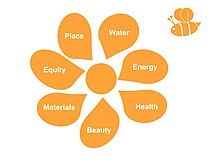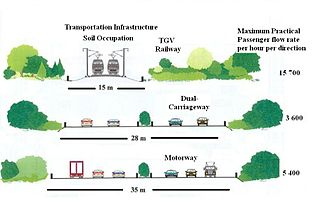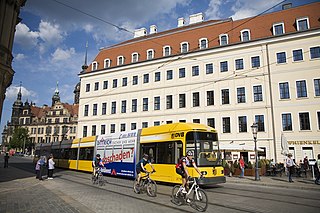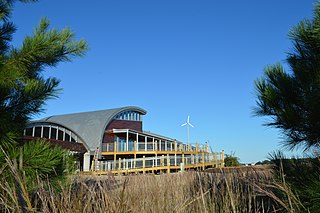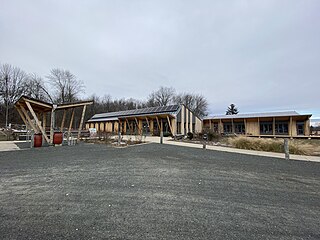| Project | Location | Status | Owner/Developer | Project Team Members |
|---|
| Arch Nexus SAC | Sacramento, CA | certified: Living | Architectural Nexus | Architect: Architectural Nexus; Civil Engineer: Warren Consulting Engineers; Landscape Architect: Architectural Nexus; Structural Engineer: Miyamoto; MEP Engineers: Glumac, ACCO Engineered Systems, Royal Electric; General Contractor: MarketOne Builders |
| Frick Environmental Center | Pittsburgh, PA | certified: Living | City of Pittsburgh and Pittsburgh Parks Conservancy | Architect: Bohlin Cywinski Jackson; Civil Engineer: H.F. Lenz Co.; Landscape Architect: La Quatra Bonci Associates; Structural Engineer: Barber & Hoffman; Construction Manager: PJ Dick |
| Class of 1966 Environmental Center | Williamstown, MA, USA | certified: Petal | Williams College | Black River Design, Architects; Integrated Eco Strategy |
| Binghamton University Nuthatch Hollow | Binghamton, NY, USA | design | Binghamton University | Ashley-McGraw, Architects; Binghamton University |
| R.W. Kern Center | Amherst, MA, USA | certified: Living | Hampshire College | Bruner/Cott Architects; Wright Builders, Inc.; Integrated Eco Strategy; Berkshire Design Group; Marc Rosenbaum; Kalin Associates, Inc.; PV Squared; Crocker Communications; Kohler & Lewis Engineers; R.W. Sullivan Engineering; Lewis Lighting Design; Richard Burke Associates |
| Hitchcock Center for the Environment | Amherst, MA, USA | certified: Living | Hitchcock Center for the Environment | designLAB Architects; Wright Builders, Inc.; Integrated Eco Strategy; Buro Happold Engineering; Berkshire Design Group; Dobbert Heating and Air Conditioning; PV Squared; Crocker Communications; Ichthys IT Services |
| Omega Center for Sustainable Living | Rhinebeck, NY, USa | certified: Living | Omega Institute | Chazen, Conservation Design Forum, Tipping-Mar + Associates, BNIM Architects, BGR Consulting Engineers, Planet Reuse, Natural Systems International (now Biohabitats), John Todd Ecological Design, David Sember Construction |
| Tyson Living Learning Center | Eureka, MO, USA | certified: Living | Washington University | Grimes Consulting, Williams Creek Consulting, Lewisites, ASDG, LLC, Hellmuth + Bicknese Architects, Solutions AEC, Clivis Multrum, Straight Up Solar, Bingman Construction Company |
| Eco-Sense | Victoria, BC, Canada | certified: Petal | Ann + Gord Baird | C.N. Ryzuk, Kris Dick, Building Alternatives, Byron Merriam (A-Tech Plumbing), Mike Isbrucker (Alternative Electric) |
| Painters Hall | Salem, OR, USA | Certified: Energy Petal | Pringle Creek Community | Opsis Architecture, Sustainable Development Inc., Spectra Construction, Tanner Creek Energy |
| The Mosaic Centre | Edmonton, AB, Canada | construction | Dennis and Christy Cuku | Mosaic Family of Companies, Manasc Isaac Architects |
| Hawaii Preparatory Academy Energy Lab | Kamuela, HI, USA | certified: Living | Hawaii Preparatory Academy | Belt Collins Hawaii Ltd., Walter Vorfeld & Associates, Flansburgh Architects, Hakalau Engineering, LLC, Buro Happold |
| EcoCenter at Heron's Head Park | San Francisco, CA, USA | occupied | Literacy for Environmental Justice | Land Development Solutions, Fulcrum Engineering, Toby Long Design, Rick Miller, Occidental Power, Eckman Environmental, John Todd Ecological, Helix Wind Power, Warm Floors |
| UniverCity Childcare | Burnaby, BC, Canada | occupied | Simon Fraser University | Space2Place Design, Fast + Epp, RADA, Hughes Condon Marler, Cobalt Engineering, Ledcor Construction Limited (part of Ledcor Group of Companies) |
| Deep Green Residence Hall | Berea, KY, USA | occupied | Berea College | Hastings + Chivetta Architects, Hellmuth + Bicknese Architects, Messer Construction, Davis & Plomin Mechanical, CMTA Consulting Engineers |
| Alice Ferguson Foundation | Accokeek, MD, USA | certified: Living | Alice Ferguson Foundation | Andropogon Associates, Ann Rothmann, Re:Vision Architecture, M2 Architecture, AKF Engineers, Biohabitats |
| Center for Sustainable Landscapes | Pittsburgh, PA, USA | certified: Living | Phipps Conseratory and Botanical Gardens | Andropogon Associates, Atlantic Engineering, The Design Alliance, CJL Engineering, evolveEA |
| VanDusen Botanical Garden Visitors Center | Vancouver, BC, Canada | occupied | VanDusen Botanical Garden Association | Cornelia Oberlander, landscape architect; Perkins and Will Canada, architects; Morrison Hershfield energy consultants, Fast + Epp structural engineers, StructureCraft timber design-builders, Ledcor Construction Limited |
| Bertschi School Living Science Classroom | Seattle, WA, USA | certified: Living | Bertschi School | KMD Architects, Skanska, GeoEngineers, GGLO, Quantum Engineers, Rushing, 2020 Engineers, Smalling Civil Engineering, Morrison Hershfield |
| June Key Delta House | Portland, OR, USA | construction | Piedmont Rose/Delta Sigma Theta sorority | Nye Architecture LLC, TM Rippey Associates, Colas Construction |
| Oregon Sustainability Center | Portland, OR, USA | pre-construction | Green Building Services, Portland State University | Gerding Edlen, SERA Architects, GBD Architects, Skanska Construction, Biohabitats |
| Jim Pattison Centre of Excellence in Sustainable Building Technologies and Renewable Energy Conservation | Penticton, BC, Canada | occupied | Okanagan College | CEI Architecture, True Consulting Group, Site 360, Fast + Epp, AME Consulting Group, Applied Engineering Solutions, PCL Construction Westcoast |
| Phinney Neighborhood Center | Seattle, WA, USA | design | Phinney Neighborhood Association | |
| Robert Bateman Centre for Art + Environmental Education | Victoria, BC, Canada | design | Royal Roads University | Iredale Group Architecture |
| Bullitt Center | Seattle, WA, USA | certified: Living | The Bullitt Foundation | Point32, developer; Schuchart, general contractor; The Miller Hull Partnership, architect; PAE Consulting Engineers, mechanical and electrical engineering; DCI Engineers, structural engineering; RDH Group, envelope engineering; Haley and Aldrich, geotechnical engineering; Springline, civil engineering; 2020 Engineering, water supply and reuse systems; Solar Design Associates, solar technology; BRC Acoustics & Technology Consulting, acoustical engineering; Bush Roes & Hitchings, surveying |
| Jasper Junior Senior High Living Classroom | Jasper, Alberta, Canada | design | JSCY (Jasper Sustainability Club for Youth | KMD Architects |
| DeAs Z2 Design Facility | San Jose, CA, USA | certified: Energy Petal | Z2 Design Facility | IDeAs |
| Mission Zero House / Kelly & Matt Grocoff Residence] | Ann Arbor, MI, USA | Certified Net Zero Energy Building | Matthew Grocoff / THRIVE | THRIVE, BLUElab University of Michigan |
| Brock Environmental Center | Virginia Beach, VA, USA | certified: Living, and LEED Platinum | The Chesapeake Bay Foundation | SmithGroupJJR, WPL, Hourigan Construction, Skanska, Janet Harrison |
| The Kendeda Building for Innovative Sustainable Design | Atlanta, GA, USA | Certified: LBC 3.1; LEED Platinum v4; LEED Zero; Georgia Audubon Wildlife Sanctuary; Native Plant Habitat Gold | Georgia Institute of Technology | Architects-Lord Aeck Sargent and The Miller Hull Partnership; General Contractor-Skanska, USA; MEP of Record-Newcomb & Boyd; Collaborating MEP-PAE Engineers; Civil Engineer-Long Engineering; Structural Engineer-Uzun+Case; Landscape-Andropogon; LBC Consultant-The Miller Hull Partnership; Lighting Design-Lighting Associates, Inc.; Geotechnical-Professional Service Industries, Inc.; Interior Designer-Lord Aeck Sargent; Water & Ecology-Biohabitats; Life Safety-Jensen Hughes; Biophilic Consultant-Sonja Bochart Wellbeing+Design |
| Cope Environmental Center | Centerville, IN, USA | Construction | Cope Environmental Center | Heapy Engineering, LWC, Thor Construction, Cope Environmental Center, [html https://web.archive.org/web/20151209063847/http://living-future.org/projectmap] |
| Sustainable Building Research Centre | Wollongong, Australia | Certified: Living | |
| Te Kura Whare | Tuhoe, Taneatua, New Zealand | Certified: Living | |
